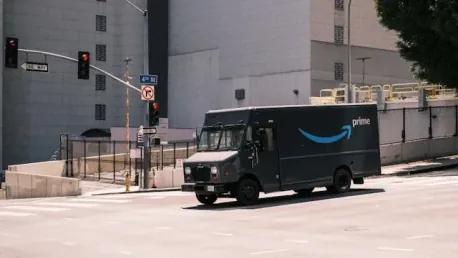Every summer, retail giants brace for one of the most anticipated events of the year—Amazon Prime Day. This sales bonanza has not only created a stir but has also set the benchmark for other summer sales events. With its significant impact on consumer shopping behaviors and impressive sales growth, the question arises: Can Amazon Prime Day maintain its dominance in the competitive summer sales arena?
The Allure of Amazon Prime Day
Exclusive Deals and Significant Discounts
Amazon Prime Day has earned a reputation for its blockbuster deals and deep discounts that are exclusive to Prime members. These offers usually surpass those of other retailers, drawing a vast number of shoppers to the platform. The allure of Prime Day lies in the sheer variety and depth of discounts available, across multiple categories from electronics to household items. Shoppers eagerly anticipate these sales to purchase high-ticket items at significantly lower prices. This strategy not only boosts Amazon’s overall sales but also helps in retaining customer interest for future promotions.
Over the years, the range of products and unbeatable prices offered during Amazon Prime Day have contributed to its success. Amazon capitalizes on the anticipation built up among its customer base, releasing teasers and sneak peeks of upcoming deals. This approach creates a sense of urgency and excitement among shoppers, leading to a surge in web traffic and sales. By providing exclusive access to Prime members, Amazon not only drives subscriptions but also secures a loyal customer base who see tangible benefits in maintaining their membership.
Strong Customer Loyalty
One of the most compelling aspects of Amazon Prime Day is the remarkable loyalty it commands from its shoppers. According to Earnest Analytics, an impressive 84% of customers who shop on Prime Day do so exclusively on Amazon, avoiding other retailers. This high loyalty rate is a testament to the trust and reliability that customers associate with Amazon. Features like a seamless shopping experience, fast shipping, and the myriad benefits of a Prime membership make Amazon a go-to destination for summer sales events.
Amazon’s focus on customer experience plays a crucial role in fostering this loyalty. The ease of navigation, personalized recommendations, and swift checkout processes ensure that customers enjoy a hassle-free shopping journey. Furthermore, Prime members benefit from perks like early access to deals, exclusive discounts, and one-day shipping, which add immense value to their shopping experience. This high level of service encourages repeat business and reinforces Amazon’s position as a leader in the retail industry.
Competitors’ Strategies and Challenges
Promotional Events by Rivals
In response to Amazon Prime Day, retail heavyweights like Walmart, Target, TikTok Shop, and Wayfair roll out their own promotional events. These events, such as Walmart’s “Big Save Event” and Target’s “Deal Days,” aim to capture the attention of budget-conscious shoppers. Despite these efforts, these retailers often struggle to match the hype and customer loyalty that Amazon enjoys. The challenge lies in not only generating interest but also converting that interest into consistent, long-term loyalty.
Retailers face the difficult task of differentiating their promotions and offering deals that can rival or at least compare favorably with Amazon’s. Competitors typically focus on their unique strengths, such as in-store offers combined with online deals or specialized product categories. However, despite competitive pricing and promotional efforts, they often fall short in creating the same level of buzz and sales figures as Amazon Prime Day. This is partly due to Amazon’s first-mover advantage and the ecosystem of benefits offered to Prime members, which rivals find hard to replicate.
Variations in Consumer Spending
When comparing the sales performance of Prime Day to other retailers’ events, a stark difference in consumer spending patterns emerges. For instance, average customer spending on Wayfair during its promotional periods is notably higher, yet it fails to overshadow the collective e-commerce sales that Amazon pulls in. Companies like Walmart and Target also see relatively modest increases in sales, even with competitive deals, highlighting the challenge of diverting shoppers from Amazon’s well-established Prime Day event.
Although Wayfair reports higher average spends per customer, the sheer volume of transactions during Amazon Prime Day gives Amazon a significant edge. Shoppers tend to spend more on big-ticket items and also indulge in impulse buying due to the limited-time offers and extensive range of products available. In contrast, competitors like Walmart and Target, despite their extensive reach and varied product lines, witness only a slight bump in sales. This suggests that while they can attract deal-hunters, sustaining that interest and converting it into substantial sales gains is a more complex challenge.
Sales Performance and Growth Metrics
Impressive Sales Figures
Amazon Prime Day consistently posts remarkable sales figures, setting new records each year. A 46% increase in sales during the Prime Day period is a testament to its effectiveness in drawing a massive customer base and converting that interest into substantial revenue. Competitors like Wayfair, with a 42% increase, and TikTok Shop, with 32%, also see spikes in sales during their promotional periods, but these surges still fall short of Amazon’s colossal growth, underscoring the dominance of Prime Day.
The impressive sales numbers during Prime Day highlight not just the success of the event but also its strategic importance for Amazon. The event serves as a major revenue driver and a platform for testing new products, enhancing customer engagement, and boosting Prime memberships. Every year, the anticipation for Prime Day seems to grow, with more consumers logging in to take advantage of its unique discounts. This continued growth underscores Amazon’s ability to captivate its audience and command their attention during this key retail period.
Broader Economic Impact
The economic impact of Prime Day extends beyond Amazon’s revenue stream. During the Prime Day sale, a staggering $14.2 billion is collectively spent on various e-commerce platforms, marking an 11% year-over-year growth. This shows the expanding influence of summer sales events and highlights the competitive landscape in which retailers operate. TikTok Shop’s notable 81% rise in sales during its “Deals For You Days” exemplifies the growing competition, even as Amazon’s dominance remains largely unchallenged.
The broader economic impact reflects a significant trend: consumers are increasingly turning to online platforms for their shopping needs, especially during major sale events. The collective boost in e-commerce sales during Prime Day underscores the ongoing shift from traditional retail to digital storefronts. Even though competitors witness substantial growth, the overarching trend of Amazon’s market lead remains evident. The challenge for other retailers then lies in carving out a niche and capitalizing on consumer interest without directly competing with Amazon’s extensive reach and robust sales infrastructure.
Factors Influencing Future Dominance
Innovation and Adaptation
For Amazon to maintain its lead, continual innovation and adaptation are crucial. Enhancing the Prime membership experience, integrating new technologies, and expanding the range of exclusive deals are potential strategies. Collecting customer feedback and leveraging data analytics to predict shopping trends can further refine Amazon’s approach. As e-commerce continues to evolve, staying ahead of technological developments and consumer expectations will be essential for Amazon to retain its dominance.
Emphasizing innovation doesn’t just mean better deals; it also involves optimizing the shopping process. Improving AI-driven recommendations, introducing personalized experiences, and ensuring faster, more reliable shipping can all contribute to maintaining customer interest. Amazon has already begun investing heavily in logistics and technology to streamline its operations. This, combined with a deep understanding of customer preferences through data analytics, positions Amazon uniquely to continue leading the market.
Competitive Edge and Market Trends
Observing market trends and understanding competitor strategies will play a critical role in defining Amazon’s future trajectory. While Prime Day remains a powerhouse, the shifting dynamics of consumer preferences and aggressive strategies from competitors could alter the competitive landscape. Keeping an eye on these trends and adapting accordingly will be essential for Amazon to sustain its position. Innovation, coupled with strategic market analysis, can provide the edge needed to navigate these changes effectively.
The landscape of retail is continually evolving, with new players entering the scene and established brands innovating to capture market share. TikTok Shop’s recent success is a prime example of a new competitor gaining ground. As consumer preferences evolve, Amazon must ensure it remains relevant and capable of meeting diverse needs. By observing and quickly adapting to these shifts, Amazon can continue to dominate the summer sales arena and beyond.
Conclusion
Every summer, major retailers gear up for one of the most eagerly awaited events of the year—Amazon Prime Day. This massive sales event has created quite the buzz and has established itself as a standard-setter for other summer sales. The event’s influence can be seen in the way it shapes consumer shopping habits and drives remarkable sales growth year over year. With such significant impact, it begs the question: Can Amazon Prime Day continue to hold its leading position amidst increasing competition in the summer sales landscape? While other retailers scramble to carve out their own share of the market, Amazon remains at the forefront, continuously innovating to keep shoppers engaged. The company’s ability to offer exclusive deals, next-day shipping, and a myriad of other benefits to its Prime members has made it challenging for competitors to catch up. As we look forward to future Prime Days, it will be fascinating to see how Amazon adapts to maintain its dominance and respond to the growing competition that aims to dethrone it from its perch as the king of summer sales.









